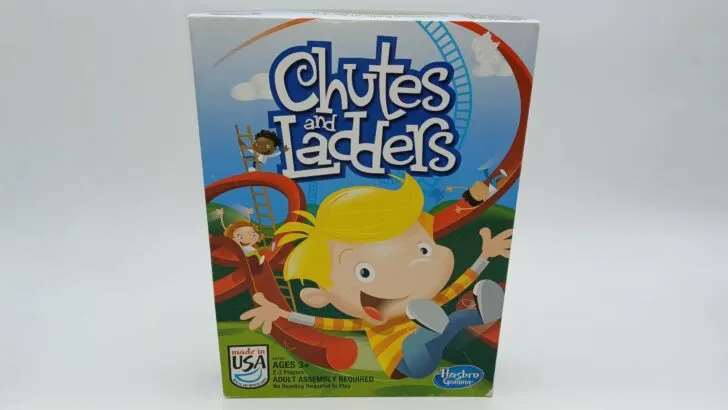Since Chutes and Ladders is a public domain game that is hundreds of years old, the game has had quite a few names over the years. Another common name for the game is Snakes and Ladders. Outside of possibly a difference in the layout of the board, all of these games are played the same.
Chutes and Ladders How to Play Quick Links: | Objective | Setup | Playing the Game | Ladders | Chutes | Winning the Game | FAQ | Components |
Objective of Chutes and Ladders
The Objective of Chutes and Ladders is to be the first player to make it to space 100.
Setup
- Place the gameboard in the middle of the table.
- Each player chooses a pawn and places it off the board next to square one.
- The youngest players starts the game.
Playing Chutes and Ladders
You will begin your turn by spinning the spinner. The number you spin determines how many spaces that you will move your pawn.
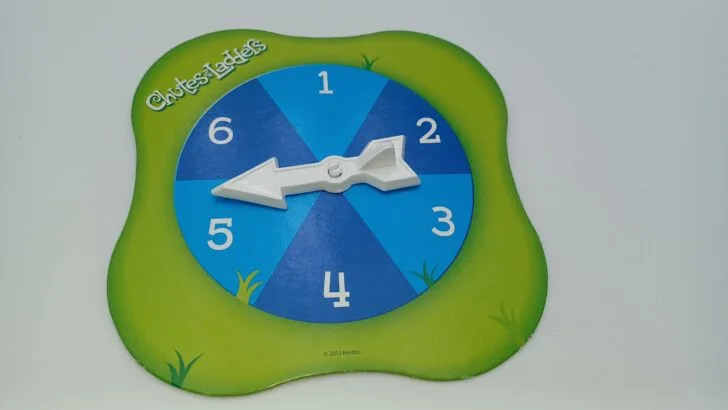
Note: Some versions of Chutes and Ladders use a six sided die instead of a spinner.
When moving your pawn you will move along the board following the spaces in numerical order. Due to how the board is designed, sometimes you will move left and sometimes right (follow the arrows). You must use all of the spaces that you spun on the spinner.
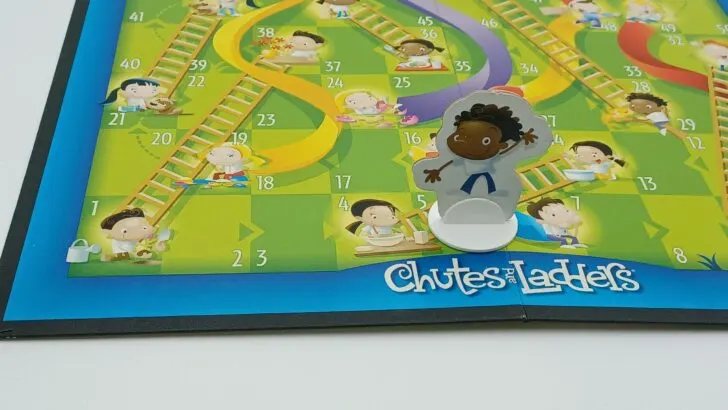
You can move through other player’s pawns and can land on a space that already has a pawn on it.
After you have finished moving your pawn, your turn ends. Play passes to the player on your left.
Ladders
Should you land on a space featuring the bottom of a ladder (after you moved all of your spaces), you will get to use the ladder to move forward.
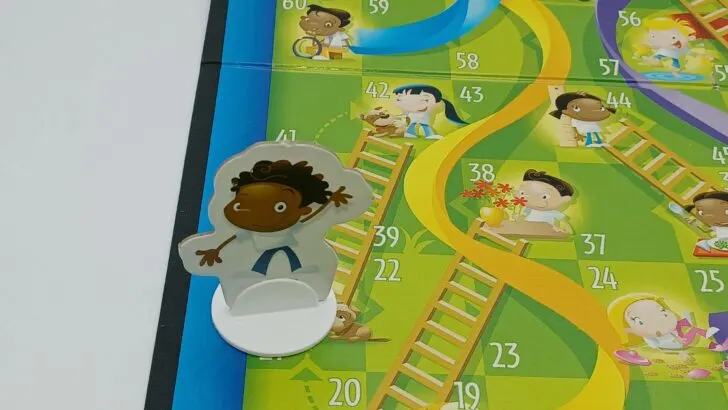
Follow the ladder and place your pawn on the space that is connected to the top of the ladder.
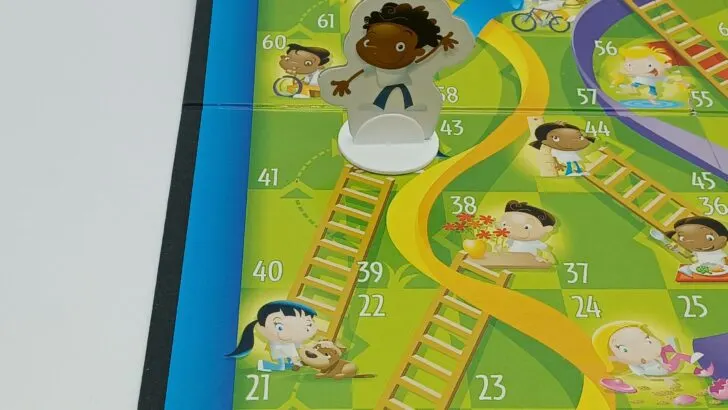
Chutes
If you land on the top of a chute after you have finished moving your pawn, you will need to use the chute.

Slide your pawn down the slide until it reaches the bottom of the chute. You will place your pawn on the space corresponding to the bottom of the chute.
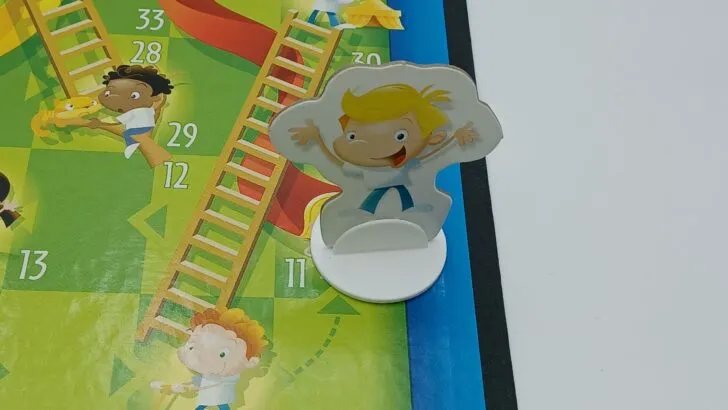
Winning Chutes and Ladders
The first player to reach the final space on the gameboard (space 100), wins the game. You can reach the final space in two different ways.
Should you spin a number allowing you to land on space 100 by exact count, you win the game. Should your spin move you past the last space, you will not move your pawn at all. On your next turn you will spin the spinner again.
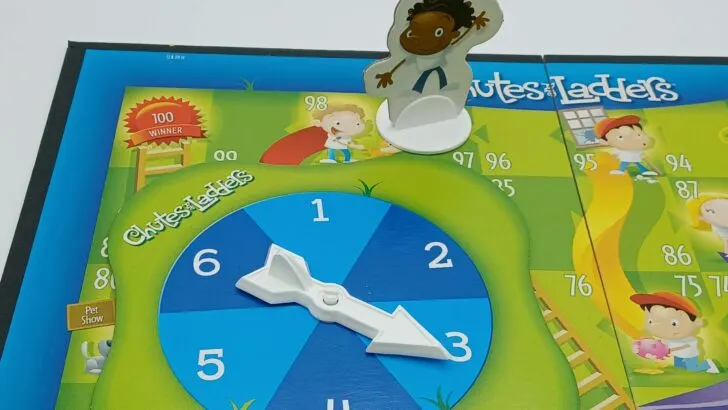
Otherwise there is a ladder that takes you to the final space. If you land on the bottom of this ladder, you will climb the ladder to the final space and win the game.
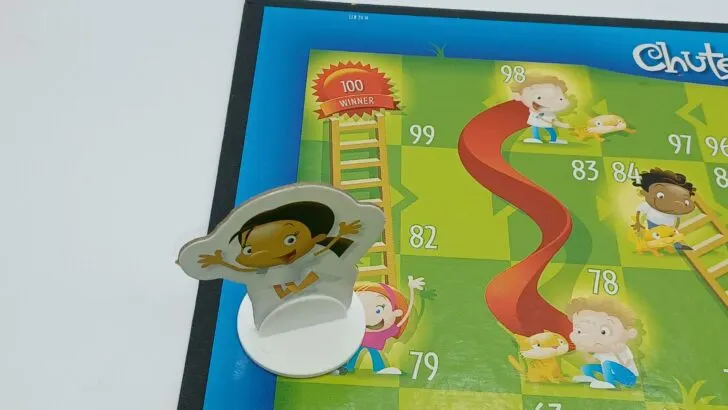
Chutes and Ladders FAQs
What Spaces Have Chutes and Ladders?
The spaces for the chutes and ladders have changed over time. Based on the 2013 version of Chutes and Ladders as well as most newer versions of the game, the ladders are on spaces:
- 1 to 38
- 4 to 14
- 9 to 31
- 21 to 42
- 28 to 84
- 36 to 44
- 51 to 67
- 71 to 91
- 80 to 100
The chutes are on the following spaces:
- 16 to 6
- 48 to 26 (In older versions this was 47 to 26)
- 49 to 11
- 56 to 53
- 62 to 19
- 64 to 60
- 87 to 24
- 93 to 73
- 98 to 78
Other Questions?
If you have any questions about how to play Chutes and Ladders, leave a comment below on this post. I will try to answer any questions asked as best and as quickly as possible.
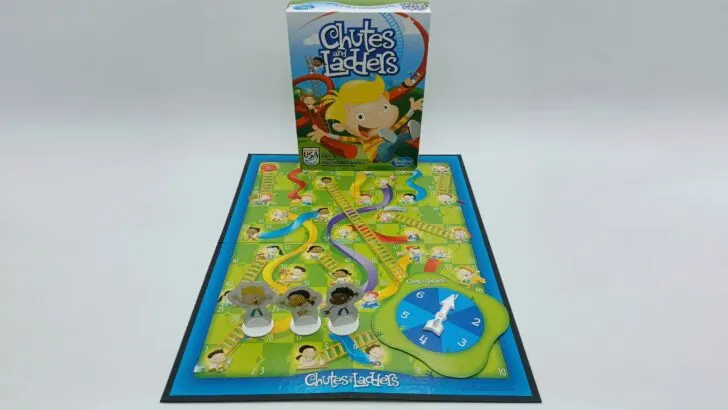
Chutes and Ladders Components
There have been many different versions of Chutes and Ladders released over the years. Therefore the components will slightly differ depending on the versions.
- Between 2-6 Playing Pieces (the version pictured only has 3 playing pieces)
- Spinner
- Gameboard
- Instructions
Year: Unknown | Publisher: Hasbro, Milton Bradley, Parker Brothers, Spin Master, Winning Moves
Genres: Children’s, Spin and Move
Ages: 3+ | Number of Players: 2-6 (depending on version) | Length of Game: 15-30 minutes
Difficulty: Light | Strategy: Light | Luck: High
Where to Purchase: Amazon, eBay Any purchases made through these links (including other products) help keep Geeky Hobbies running. Thank you for your support.
For more board and card game how to plays/rules and reviews, check out our complete alphabetical list of board game posts.

